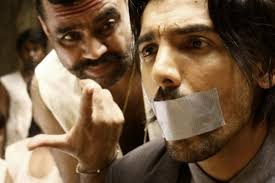A Dark Mirror of Society
The neo-noir genre in the Indian film rad is a cold, hard (and often) bleak mirror of our society, the good, the bad, the ugly. These movies aren’t just stories about crime; they are atmospheric reflections on moral compromise, institutional accommodation and existential malaise. As audiences respond to complex storytelling, Indian neo-noir has carved out its own postmodernist subgenre, one that dares to confront the uncomfortable truths of urbanity.
What is Indian Neo-Noir?
Indian neo-noir draws inspiration from Western film noir of the 1940s and 50s, but infuses it with local context, sociopolitical nuance, and cultural specificity. These films are characterized by:
- Anti-heroes or morally gray protagonists
- Cynical worldviews
- Urban settings often riddled with decay
- Strong visual aesthetics, often dimly lit or starkly contrasted
- Themes of betrayal, crime, and psychological trauma
Classic examples include Johnny Gaddaar, No Smoking, Shaitan, and more recently Andhadhun and Monica, O My Darling.
Thematic Breakdown
1. Crime as a Catalyst for Transformation
In Indian neo-noir, crime isn’t just background noise it often initiates the entire character arc. In Johnny Gaddaar, a simple heist unravels into betrayal and paranoia. In Badlapur, a brutal crime sets off a narrative of revenge that challenges the viewer’s perception of justice.
Crime reveals characters for who they really are. It forces decisions that unmask inner demons and highlight moral decay. Unlike mainstream Bollywood where crime is externalized, in neo-noir it’s deeply personal.
2. Corruption: The Inescapable System
Corruption in these films is rarely just individual. It is institutional, pervasive, and depressingly normalized. From crooked cops (Ugly) to compromised politicians (Shanghai), these stories show that corruption isn’t a flaw in the system it is the system.
This resonates strongly with audiences, reflecting the real-world frustrations of dealing with broken institutions. Characters are often trapped in a web of deceit where escaping with clean hands is impossible.
3. Chaos and Existential Angst
Chaos is not just situational but psychological. Films like No Smoking dive into surreal territory, reflecting the protagonist’s inner disintegration. Others like Shaitan use chaotic editing, music, and nonlinear storytelling to evoke a sense of disorientation.
This mirrors the confusion of modern urban existence fast-paced, morally ambiguous, and emotionally disjointed. Characters struggle not just with external threats but internal dissonance.
How Bollywood Thrillers Adapt from Hollywood
Bollywood and Hollywood often share narrative DNA, but Indian neo-noir adapts these influences with unique twists:
- Cultural Localization: While Taxi Driver inspired Joker, Indian films like Raman Raghav 2.0 localize the psychological descent into a world shaped by poverty, power, and mental illness.
- Narrative Pacing: Bollywood tends to favor emotionally rich arcs over Hollywood’s often cold, procedural approach.
- Emphasis on Music and Visual Symbolism: Soundtracks in films like Andhadhun and Dev.D enhance storytelling with subtext and irony.
Case Studies: Must-Watch Indian Neo-Noir Films
1. Johnny Gaddaar (2007)
A heist gone wrong sets off a chain of betrayal, mimicking Hitchcockian suspense.
2. Andhadhun (2018)
A blind pianist becomes entangled in murder and deceit, with twists that redefine the narrative every few scenes.
3. Ugly (2014)
A child’s disappearance unearths layers of corruption, broken families, and miscommunication.
4. Raman Raghav 2.0 (2016)
A serial killer stalks Mumbai while a corrupt cop mirrors his descent into madness.
5. Shaitan (2011)
Youth, drugs, and a cover-up spiral into psychological chaos.
6. Badlapur (2015)
A man’s slow-burn revenge challenges conventional heroism.
7. Monica, O My Darling (2022)
Corporate greed and murder collide in a quirky noir comedy.
8. No Smoking (2007)
A Kafkaesque journey through addiction, choice, and surreal punishment.
9. Manorama Six Feet Under (2007)
A homage to Chinatown, this film investigates small-town corruption with noir undertones.
10. Talaash (2012)
Loss and the supernatural mix with noir sensibilities in a deeply emotional mystery.
Visual and Narrative Aesthetics
The visual language of Indian neo-noir is distinct. Use of chiaroscuro lighting, shadow play, and saturated colors enhances the tension. Non-linear storytelling, unreliable narrators, and abrupt tonal shifts challenge the viewer’s expectations.
These elements serve not just style but substance, reflecting the fragmented reality of the characters.
Relevance to Modern Storytelling and Sales
Neo-noir’s rise parallels shifts in other industries—like sales—where transparency, complexity, and data-driven decisions are becoming the norm. Just as sales is evolving through AI and automation, neo-noir storytelling is adapting to intelligent audiences who demand nuance and realism.
AI-driven data analytics help modern filmmakers understand viewer trends, predict plot engagement, and refine scripts. Similarly, sales professionals now rely on behavioral insights to tailor experiences—just as neo-noir tailors its grim realism to fit modern disillusionment.
A Genre That Speaks the Unspeakable
Indian neo-noir films offer more than just entertainment—they are cultural critiques that reflect the chaos, corruption, and moral complexity of real life. As the genre continues to evolve, it promises richer, more challenging narratives that speak to a generation caught between hope and despair.
Whether through gut-wrenching plot twists or unforgettable characters, neo-noir leaves a mark that’s hard to forget. And perhaps that is its true power: to force us to look at the shadows we often ignore.
Frequently Asked Questions (FAQ)
What makes a film neo-noir?
Neo-noir films combine noir aesthetics with modern themes like psychological instability, systemic corruption, and moral ambiguity.
Are Indian neo-noir films different from Western ones?
Yes. Indian neo-noir adapts local cultural, social, and political contexts, often blending melodrama and music into the genre.
Which Indian neo-noir film should I watch first?
Andhadhun is a great starting point for its blend of suspense, humor, and shocking twists.
Is neo-noir popular in Indian cinema?
Yes, especially among urban audiences seeking intelligent, layered storytelling.
How does technology influence neo-noir filmmaking?
Filmmakers use data analytics to understand audience preferences, while AI helps in script development and even post-production editing.